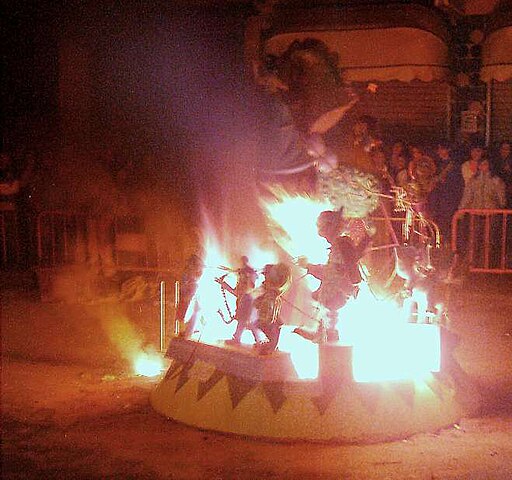
Exploring Spanish Festivals
La Tomatina
With a rich history that originated decades ago as a small-town tradition, La Tomatina has evolved into one of Spain’s most iconic festivals, drawing tourists from all over the world. Taking place in Buñol in the Valencia region of Spain, La Tomatina is celebrated on the last Wednesday of August. The event starts with the palo jabón, a greased pole climbing contest before over ripe tomatoes are handed out for the grand finale – an hour of tomato throwing.
Semana Santa
Semana Santa, translated to Holy Week, is celebrated in the lead up to Easter. During the event, brotherhoods organise processions featuring biblical figures such as Jesus and Mary, often carried on ornate floats. During the spectacle, processions wind through the streets in a reflection of Spain’s Catholic heritage.
Feria de Abril
Spring in Seville is a special time. Two weeks after Semana Santa, the Feria de Abril or April Fair, which began in 1847 as a livestock and agriculture fair, takes place as a week-long celebration of Andalusian culture. During the week, a recinto ferial or fairground is constructed and over a thousand colourful striped tents known as casetas are arranged in blocks along the streets. Horse-drawn carriages and bullfighting events take place while inside the casetas, families, friends, and businesses host private parties featuring flamenco dancing, traditional music and Andalusian cuisine such as tapas.
San Fermín
The Spanish San Fermin festival is held in Pamplona and features the famous running of the bulls. The festival got its name from originally being celebrated on Saint Fermín’s feast day, before later being moved to July. A fireworks procession or chupinazo followed by traditional singing kicks off the event before participants – who traditionally wore white with red scarves – run for half a mile while pursued by bulls. The run ends at the bull ring, where the bulls would later take part in staged bullfights. The event has become a controversial and polarising issue due to the ethical nature of animal welfare and public safety.
Las Fallas
In the month of March, the Fallas celebrations take place in Valencia, held in honour of Saint Joseph, the patron saint of carpenters. Traditionally, to honour the event, carpenters would burn pieces of wood to mark the arrival of spring. The tradition evolved over the years and the wooden structures started to take on satirical human forms known as ninots, through use of additional materials such as paper mâché. The ninots are usually then placed together to create the fallas, large sculptures and visually striking works of art.
The fallas are displayed in various neighbourhoods for several days during the plantà stage and are judged and awarded prizes in various categories based around craftmanship and creativity. The event finally culminates in La Cremà; here the fallas are set on fire, symbolising the purification of the old to make way for the new.
If you are interested in studying Spanish, Oxford Open Learning offer the chance to do so at IGCSE and A level. You can find out more by clicking on the links below, or can Contact Us here.
`